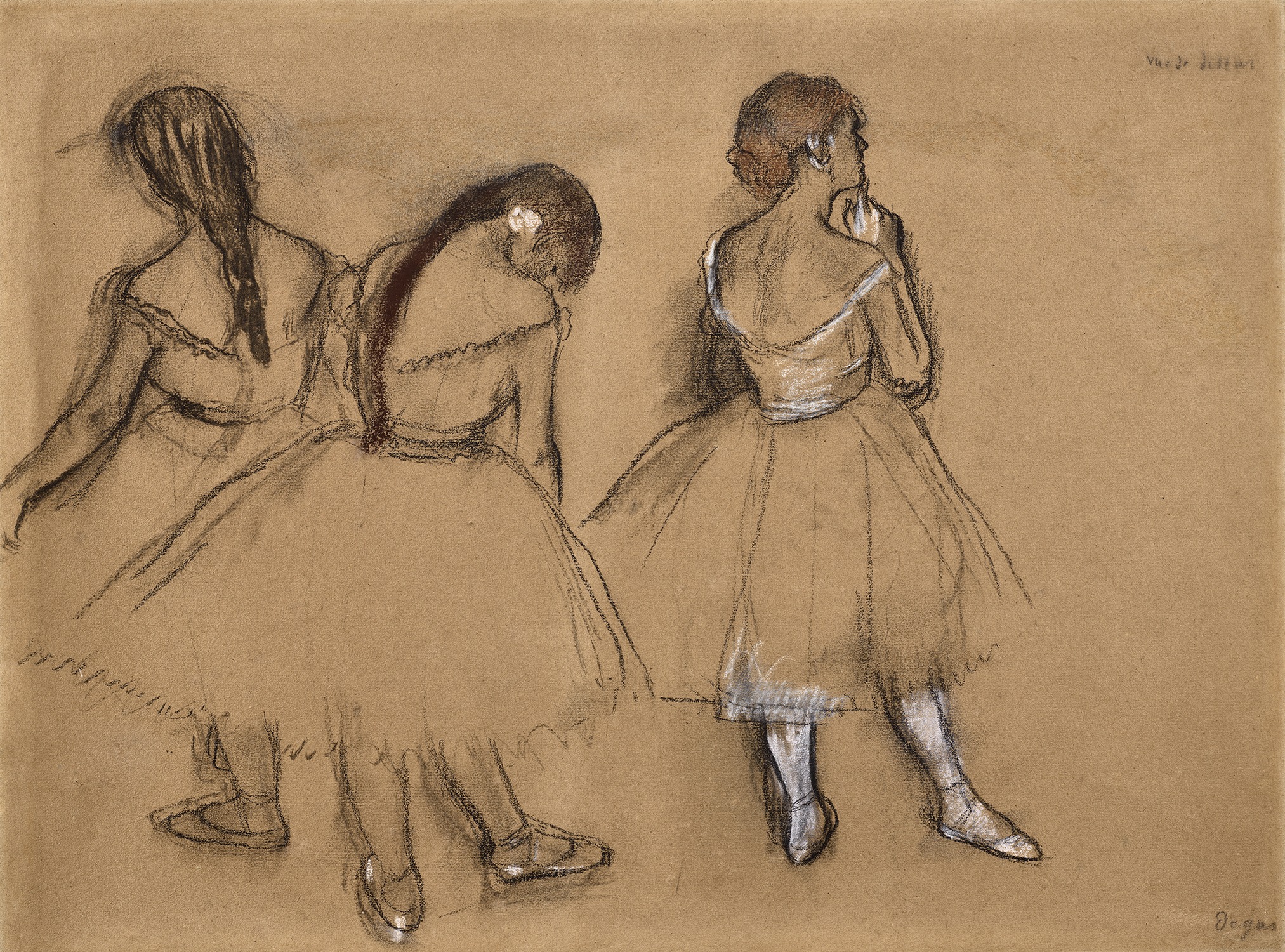

Property from a Private Collection, New York
155Ο◆
Edgar Degas
Trois danseuses
signed "Degas" lower right; inscribed "vue de dessus" upper right
pastel and charcoal on buff-colored wove paper
image 17 1/4 x 23 in. (43.8 x 58.4 cm)
sheet 18 1/2 x 24 1/4 in. (47 x 61.6 cm)
sheet 18 1/2 x 24 1/4 in. (47 x 61.6 cm)
Executed in 1880.